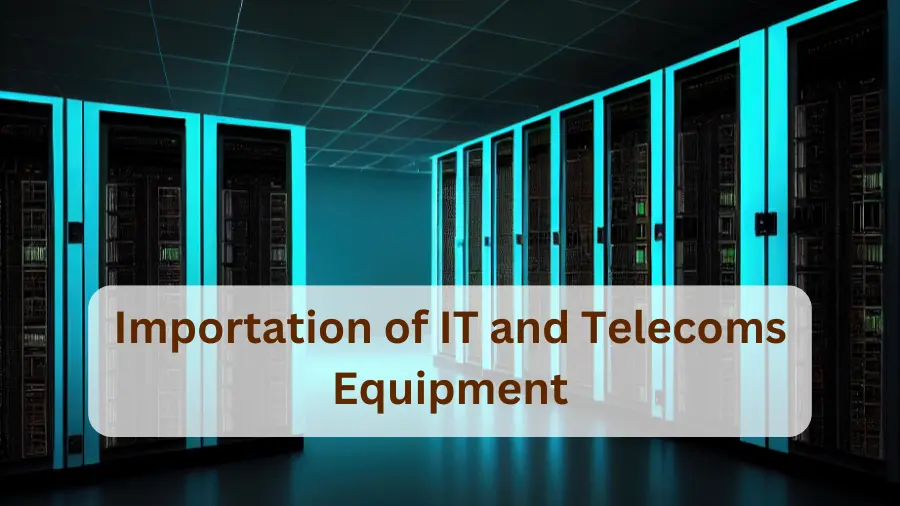To successfully manage IT and telecommunications equipment import, businesses must navigate complex regulations, ensure compliance with local standards, and optimize logistics for smooth operations. Understanding these requirements is critical to minimizing risks, reducing costs, and maintaining operational efficiency. Every step must be carefully executed to ensure timely delivery and avoid costly setbacks, from obtaining necessary approvals to meeting technical and safety standards.
This guide outlines the legal requirements and essential documents needed for importing IT and telecom equipment, providing your business with the knowledge to streamline the process and achieve seamless operations.
General Requirements for Importing IT and Telecom Equipment
The importation of IT and telecommunications equipment is subject to various regulatory requirements, which can differ significantly between countries. These regulations ensure that the imported equipment adheres to local technical standards, safety protocols, and customs procedures. Below is an in-depth guide to the essential requirements involved in importing such equipment.
Type Approval
Before importing telecommunications equipment into most countries, importers are required to obtain type approval. This ensures that the equipment meets the country’s local technical standards and is compatible with its communication networks. The approval process often involves testing the equipment to confirm compliance with safety and operational guidelines.
Registration
Importers must typically register with relevant local authorities. Depending on the country, this may include obtaining specific licenses for importers, dealers, or manufacturers. This step ensures that only authorized parties can import and distribute telecommunications and IT equipment.
Standard Documents Required for Importation of IT Equipment
To facilitate the import process and ensure compliance with national laws, several key documents are typically required. These documents verify that the equipment adheres to the technical standards and regulatory requirements of the country and facilitate customs clearance. Here’s a detailed list of the most commonly required documents:
1. Import License
An import license is an official authorization issued by the government or relevant regulatory body that grants permission to import telecommunications and IT equipment. This license ensures that the importer is recognized as an authorized entity and complies with local import regulations. It may also outline specific conditions or restrictions on the types of goods being imported, such as quotas or safety standards.
2. Company Registration Certificate
A company registration certificate proves that the business importing the equipment is legally registered in the country. It confirms the business’s legal status and authorization to operate within the local market. This certificate typically includes information about the company’s legal structure, registration number, and scope of operations. It is essential to prove the legitimacy of the importer to customs and other regulatory authorities.
3. Tax Registration Certificate
The tax registration certificate is a document that confirms the importer is registered with the relevant tax authorities in the country. This certificate ensures that the importer is compliant with local tax regulations, including sales tax, VAT, or any other applicable duties on the imported goods. It is mandatory to ensure that the company can legally conduct business and fulfill tax obligations related to imports.
4. Technical Standards Compliance
Many countries require certificates that confirm the imported telecom equipment complies with local technical standards. These standards cover safety, performance, electromagnetic compatibility, and more. For example, in Saudi Arabia, telecommunications equipment must meet the specifications outlined by the Communications and Information Technology Commission (CITC), and the importer must provide a Certificate of Conformity (CoC) to prove this compliance. This ensures that the equipment is safe to use in the country’s communication networks and meets required safety protocols.
5. Commercial Invoice
A commercial invoice is a key document in the importation process. The supplier provides details on the imported items, including their quantities, unit prices, total prices, and a description of each item. This document is essential for customs authorities, as it is used to verify the value of the goods and assess applicable duties and taxes. It also proves the transaction between the importer and the supplier.
6. Packing List
The packing list provides a detailed inventory of all the items included in the shipment. It includes information on each item’s quantity, weight, and packaging. Customs authorities use the packing list to cross-check the shipment’s contents against the commercial invoice to ensure everything listed is accounted for. This document helps prevent discrepancies and delays in customs clearance.
7. Bill of Lading or Freight Bill
A Bill of Lading (B/L) or Freight Bill is a crucial document in the importation process. The carrier issues it and acknowledges that the goods have been received for shipment. This document proves the transport contract and gives the importer the right to claim the goods upon arrival. It includes details such as the shipment’s origin, destination, and the parties involved in the transport. The Bill of Lading is required for customs clearance and is used to track the movement of goods during their journey.
8. Additional Documentation and Procedures
- Arrival Notice: A notification from the shipping company about the arrival of goods at the port or airport. This helps the importer prepare for customs clearance and finalize the necessary steps for receiving the goods.
- Customs Declaration: A formal statement made to customs authorities detailing the nature, quantity, and value of the imported goods. It is essential for the assessment of duties and taxes and ensures the proper clearance of goods through customs.
- Dangerous Goods Declaration (If Applicable): Required when the imported equipment includes hazardous materials. This document ensures the equipment is transported according to safety regulations and that any dangerous materials are handled appropriately.
- End User Registration: In some countries, such as Saudi Arabia, the end user must register with relevant authorities (e.g., CITC) before using the imported equipment. This ensures that only authorized entities can legally use specific telecommunications equipment.
- Inspection Certificates (If Applicable): In certain cases, an inspection certificate is needed to verify that the equipment meets the required safety and technical standards. Accredited testing facilities issue these certificates and ensure the equipment is safe for use and complies with local regulations.
Simplify Your IT and Telecom Imports with Our Experts
Importing telecom equipment into Africa and the Middle East requires strict adherence to local regulations. Partner with our IOR Services to navigate certifications and avoid customs delays. Trust us to navigate the intricacies of IT imports, so you can concentrate on growth and core operations.
Complete the form today to get started and optimize your import strategy.

